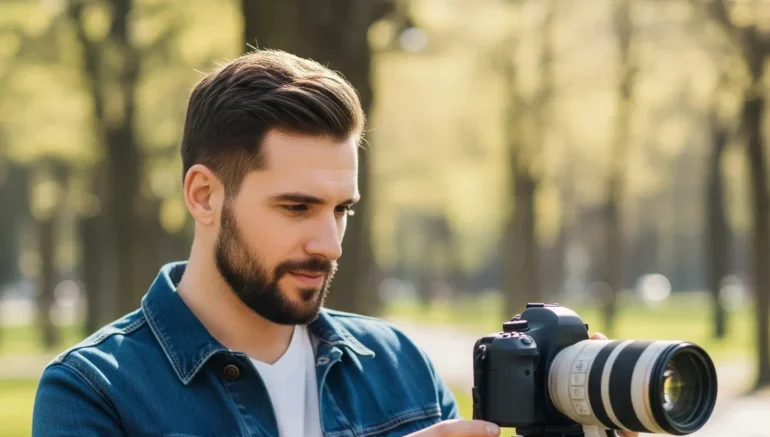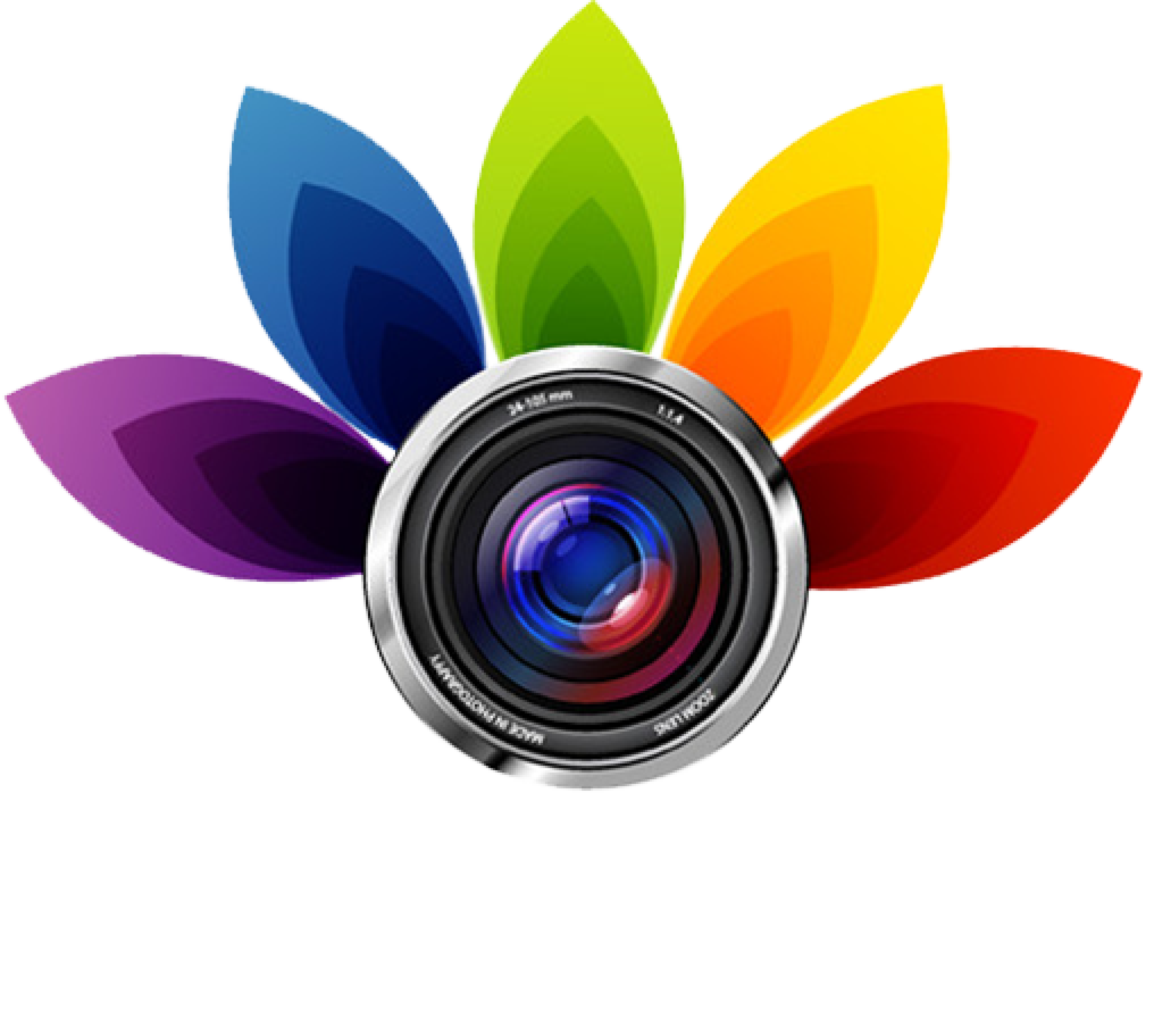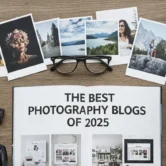
10 Camera Setup Tips Every Beginner Should Know
Getting into photography journey can feel exciting, but also a bit confusing at first. There are so many buttons, settings, and gear choices that it’s easy to feel lost. That’s why having the right camera setup is a great way to begin. You don’t need the most expensive gear what matters is knowing what each part does and how to use it. Once you’re comfortable with your camera setup, taking photos becomes more fun and less stressful.
In this guide, we’ll go through 10 simple tips to help you get started with your photography journey camera setup. These tips are perfect for beginners who want to build confidence behind the lens. From choosing the right accessories to getting familiar with the basic features, we’ll keep everything clear and easy to follow. After reading this, you’ll be ready to take better photos with a setup that works for you. Let’s get started and make your photography journey a smooth one.
Know What You Need Before You Buy
 Before spending money on a camera setup for your photography journey, it’s important to know what you need. Many beginners make the mistake of buying expensive gear without fully understanding how it works or if it suits their goals. Start by thinking about the kind of photos you want to take. Are you more into portraits, landscapes, travel, or maybe product photos? Your answer will help you choose the right type of camera and accessories. Begin with the basics and slowly build your camera set up as you learn more. Make sure you do a bit of research or ask others who are already enjoying their photography journey.
Before spending money on a camera setup for your photography journey, it’s important to know what you need. Many beginners make the mistake of buying expensive gear without fully understanding how it works or if it suits their goals. Start by thinking about the kind of photos you want to take. Are you more into portraits, landscapes, travel, or maybe product photos? Your answer will help you choose the right type of camera and accessories. Begin with the basics and slowly build your camera set up as you learn more. Make sure you do a bit of research or ask others who are already enjoying their photography journey.
Here are some simple tips to guide you:
- Think about your main purpose for using a camera
- Look for beginner-friendly models with helpful features
- Compare prices and read reviews from real users
- Ask a friend or join a group for advice
- Make sure your camera fits comfortably in your hands.
Taking time to know your needs will save you from spending too much or getting overwhelmed with gear you don’t use.
Choose the Right Camera for Your Goals
 Not all cameras are built the same, and choosing the right one depends on what you want to achieve. If you’re planning to take casual family photos or travel shots, a compact camera or an entry-level mirrorless might be enough. But if you’re aiming for more detailed work like portraits, product photography, or videos, a DSLR or a mirrorless camera with more features may suit you better. Think about how often you’ll use it, the type of subjects you’ll shoot, and if you want something simple or something that offers more control.
Not all cameras are built the same, and choosing the right one depends on what you want to achieve. If you’re planning to take casual family photos or travel shots, a compact camera or an entry-level mirrorless might be enough. But if you’re aiming for more detailed work like portraits, product photography, or videos, a DSLR or a mirrorless camera with more features may suit you better. Think about how often you’ll use it, the type of subjects you’ll shoot, and if you want something simple or something that offers more control.
It’s easy to get confused with all the options out there, but staying focused on your personal needs makes the decision easier. Don’t just buy based on brand or price. Look at the features that matter to you and try to match them with your plans.
Here are a few tips to help:
- Make a list of the type of photos you want to take
- Choose between DSLR, mirrorless, or compact based on your style
- Check if the camera has video features if you plan to shoot videos
- Make sure it has auto modes if you’re a complete beginner
- Test how it feels in your hands comfort matters too.
Choosing the right camera is like picking a good tool it should make your work easier and more enjoyable.
Get a Lens That Matches Your Style
 Your lens plays a big role in how your photos turn out. It’s just as important as the camera itself. Different lenses are made for different styles, so picking one that fits how you like to shoot will help you get better results. For example, if you enjoy taking portraits, a lens with a wide aperture like 50mm f/1.8 can give you a nice background blur. On the other hand, if you love shooting wide scenes like landscapes or city views, a wide-angle lens will give you more space in your frame. The key is to match the lens to the kind of photography journey you enjoy most.
Your lens plays a big role in how your photos turn out. It’s just as important as the camera itself. Different lenses are made for different styles, so picking one that fits how you like to shoot will help you get better results. For example, if you enjoy taking portraits, a lens with a wide aperture like 50mm f/1.8 can give you a nice background blur. On the other hand, if you love shooting wide scenes like landscapes or city views, a wide-angle lens will give you more space in your frame. The key is to match the lens to the kind of photography journey you enjoy most.
If you’re just starting out, it’s okay to begin with a kit lens. As you learn, you’ll get a better idea of what kind of lens suits your needs. Don’t rush to buy an expensive one and take your time to explore.
Here are some helpful tips to guide your lens choice:
- For portraits, go with 50mm or 85mm lenses
- For landscapes, try 10-24mm or other wide-angle lenses
- For everyday use, a 24-70mm zoom lens offers flexibility
- For close-up shots, investigate macro lenses
- Check if the lens is compatible with your camera brand.
Choosing the right lens helps you express your style and makes shooting more enjoyable.
Invest in a Sturdy Tripod
 A tripod may seem like an extra tool, but it can make a big difference in your photos. It keeps your camera steady, which is helpful when shooting in low light, using slow shutter speeds, or taking self-portraits. A tripod also gives you time to frame your shot better and focus on small details. For beginners, it makes learning easier because you’re not rushing to hold the camera steady. If you plan to take photos of landscapes, night scenes, or products, a tripod is a smart and useful choice.
A tripod may seem like an extra tool, but it can make a big difference in your photos. It keeps your camera steady, which is helpful when shooting in low light, using slow shutter speeds, or taking self-portraits. A tripod also gives you time to frame your shot better and focus on small details. For beginners, it makes learning easier because you’re not rushing to hold the camera steady. If you plan to take photos of landscapes, night scenes, or products, a tripod is a smart and useful choice.
Not all tripods are the same, so it’s good to find one that’s stable and fits your camera well. You don’t have to buy the most expensive one but avoid ones that feel too light or shaky. A strong tripod will last longer and keep your camera safe.
Here are a few tips when buying a tripod:
- Choose one with strong legs and a solid build
- Make sure it can hold the weight of your camera and lens
- Look for one with adjustable height and easy locks
- A quick release plate makes setup faster
- Try to pick one that’s easy to carry if you shoot outdoors.
A reliable tripod is more than just supporting; it gives you confidence and better results.
Don’t Forget a Good Memory Card
 A good memory card is often overlooked, but it’s one of the most important parts of your camera setup. It stores all your photos and videos, so choosing the right one can help you avoid slow performance or lost files. Not all memory cards are the same, some are faster and more reliable than others. If your card is too slow, it might cause delays when saving photos, especially if you’re shooting in high quality or recording videos. A slow card can also stop you from taking multiple shots quickly.
A good memory card is often overlooked, but it’s one of the most important parts of your camera setup. It stores all your photos and videos, so choosing the right one can help you avoid slow performance or lost files. Not all memory cards are the same, some are faster and more reliable than others. If your card is too slow, it might cause delays when saving photos, especially if you’re shooting in high quality or recording videos. A slow card can also stop you from taking multiple shots quickly.
When picking a memory card, pay attention to both the size (storage space) and the speed class. The speed class tells you how fast the card can write data, which matters for smooth shooting.
Here are a few tips to help you choose a good one:
- Go for at least a Class 10 or UHS-I card for basic use
- Choose a card with 32GB or higher to store more photos
- Buy from trusted brands to avoid fake or faulty cards
- Keep a spare card in case your main one gets full or damaged
- Check if your camera supports SD, microSD, or CF cards.
Having a reliable memory card means you can focus on shooting without worrying about losing your work.
Learn the Buttons and Dials First
 Before diving into advanced features, it’s best to learn what the basic buttons and dials on your camera do. These controls help you adjust settings like shutter speed, aperture, ISO, and focus. Knowing where they are and how to use them saves you time while shooting. Instead of digging through menus, you can quickly make changes with just a few clicks. This makes the whole experience smoother and helps you stay focused on your subject. You don’t need to memorize everything at once. Start with the most-used controls and practice using them often.
Before diving into advanced features, it’s best to learn what the basic buttons and dials on your camera do. These controls help you adjust settings like shutter speed, aperture, ISO, and focus. Knowing where they are and how to use them saves you time while shooting. Instead of digging through menus, you can quickly make changes with just a few clicks. This makes the whole experience smoother and helps you stay focused on your subject. You don’t need to memorize everything at once. Start with the most-used controls and practice using them often.
Here are some tips to help you get started:
- Read your camera manual or watch quick beginner tutorials
- Practice adjusting settings while your camera is off
- Use labels or stickers to mark the buttons you use most
- Try changing one setting at a time to see what it does
- Keep your camera nearby and get familiar during your free time.
Getting comfortable with your camera’s layout will give you more control and confidence every time you shoot.
Set Up Your Camera the Smart Way
 Setting up your camera the smart way means adjusting it to fit your needs before you start shooting. Most cameras come with default settings, but these may not give you the best results. Simple changes like setting your image quality to JPEG or RAW, turning on the grid for better framing, or adjusting the brightness of your screen can make a big difference. It’s also helpful to turn off features you don’t need, like beeps or long previews, so your camera feels easier to use. Getting your setup right from the start will help you take clearer and more organized photos.
Setting up your camera the smart way means adjusting it to fit your needs before you start shooting. Most cameras come with default settings, but these may not give you the best results. Simple changes like setting your image quality to JPEG or RAW, turning on the grid for better framing, or adjusting the brightness of your screen can make a big difference. It’s also helpful to turn off features you don’t need, like beeps or long previews, so your camera feels easier to use. Getting your setup right from the start will help you take clearer and more organized photos.
Once your camera feels comfortable to use, taking pictures becomes smoother and more enjoyable. You won’t have to stop and fix settings in the middle of a good moment.
Here are some easy setup tips to follow:
- Set your date, time, and language
- Choose your image quality (start with JPEG, try RAW later)
- Turn on grid lines for better framing
- Set autofocuses to your preferred mode
- Save your settings if your camera allows it.
A smart setup makes your camera feel more like your own tool, not just a device full of buttons.
Keep Your Camera Clean and Safe
 Taking care of your camera setup for your photography journey is just as important as learning how to use it. Dust, moisture, and scratches can affect how your photos look and how long your gear lasts. A clean lens means sharper photos, and a well-protected camera is less likely to break or stop working. Even if you’re only using your camera indoors, it’s still a good habit to wipe it down regularly and store it properly. With the right care, your setup can stay in good shape for years.
Taking care of your camera setup for your photography journey is just as important as learning how to use it. Dust, moisture, and scratches can affect how your photos look and how long your gear lasts. A clean lens means sharper photos, and a well-protected camera is less likely to break or stop working. Even if you’re only using your camera indoors, it’s still a good habit to wipe it down regularly and store it properly. With the right care, your setup can stay in good shape for years.
Here are a few tips to help protect and clean your gear:
- Use a soft microfiber cloth to gently clean the lens
- Keep your camera in a padded bag when not in use
- Avoid touching the lens or sensor with your fingers
- Store your gear in a dry place to prevent moisture damage
- Use a lens cap and body cap when the camera is not in use.
A little care goes a long way in keeping your camera working well and ready for your next shot.
Practice with Everyday Subjects
 You don’t need to travel far or wait for special moments to practice your photography journey. In fact, the best way to learn is by using what you already have around you. Your home, pets, food, plants, or even items on your desk can be great practice subjects. These everyday scenes give you a chance to explore lighting, angles, and focus without pressure. The more you shoot, the more comfortable you’ll become with your camera and how it works.
You don’t need to travel far or wait for special moments to practice your photography journey. In fact, the best way to learn is by using what you already have around you. Your home, pets, food, plants, or even items on your desk can be great practice subjects. These everyday scenes give you a chance to explore lighting, angles, and focus without pressure. The more you shoot, the more comfortable you’ll become with your camera and how it works.
Practicing with simple subjects helps build your confidence and improves your eye for detail. You’ll start to notice how light changes throughout the day or how different settings affect your photos.
Here are some ideas to try:
- Take photos of your morning coffee or favorite meal
- Try different angles when photographing books or objects
- Use window light for natural, soft lighting
- Practice focusing on your pet or a moving object
- Set small photo challenges, like “something red” or “shadows”.
The more you practice, the more you’ll learn and soon, taking great photos will start to feel natural.
Keep It Simple and Have Fun
 Starting with photography doesn’t mean you need to learn everything all at once. It’s okay to keep things simple and focus one step at a time. Don’t worry too much about perfect settings or advanced techniques that will come with practice. What matters most in the beginning is enjoying the process and learning at your own pace. The more relaxed and curious you are, the better your photos will turn out. Taking photos should feel fun, not stressful. Try new things, make mistakes, and enjoy the little wins along the way.
Starting with photography doesn’t mean you need to learn everything all at once. It’s okay to keep things simple and focus one step at a time. Don’t worry too much about perfect settings or advanced techniques that will come with practice. What matters most in the beginning is enjoying the process and learning at your own pace. The more relaxed and curious you are, the better your photos will turn out. Taking photos should feel fun, not stressful. Try new things, make mistakes, and enjoy the little wins along the way.
Here are a few simple ways to keep it light and fun:
- Take photos of things that make you happy
- Try new locations like your garden or a nearby street
- Don’t compare your work with others focus on your progress
- Turn your photo sessions into short walks or creative breaks
- Celebrate the photos you like, even if they’re not “perfect”. When you enjoy what you’re doing, learning becomes easier, and your creativity shines through in every shot.
Conclusion
Getting started with a good camera setup doesn’t have to be hard, just take it one step at a time. With the right tools, simple tips, and a little practice, you’ll be on your way to taking better photos in no time. Remember, it’s not about having the most expensive gear, it’s about knowing how to use what you have. Start small, keep learning, and most of all, have fun with it.
Read Next: 10 Best Travel Tripods for Every Adventurer’s Perfect Shots





